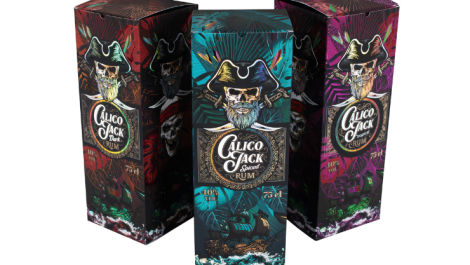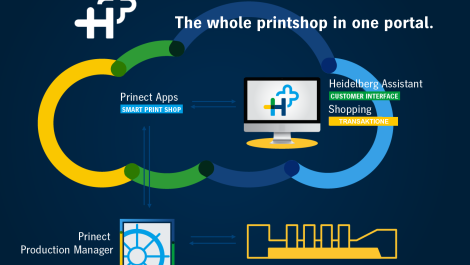Apex Digital Graphics’ Neil Handforth (left) and Bob Usher (right) agree the reselling deal with Konica Minolta’s regional sales manager Caroline Mannering.
Reseller Apex Digital Graphics, best known as the UK dealer for Ryobi litho presses, took a leap into the digital production printing sector this year, agreeing a deal to sell Konica Minolta’s devices. Andy Knaggs caught up with the progress made.
Three confirmed orders for Konica Minolta digital production presses have been taken by Apex Digital Graphics since the company was announced as a new reseller for the systems in January, and a new digital sales manager (ex-Danwood and Litho Supplies’ Mike Ryan) based in Nottingham has also been appointed. Konica’s C7000 press is now tidily ensconced inside Apex’s Hemel Hempstead showroom, and discussions with further customers considering a digital press investment are in various stages.
All of this news comes by way of Neil Handforth, Apex Digital Graphics’ sales and marketing director, as he reflects on the first few months of the arrangement. ‘The reception has been very good so far. There are a good number of printers out there that have not made the first digital step and they are grateful for the guidance,’ he told Digital Printer.
The process began in 2012, when Apex decided that it was high time it took steps into the digital production printing market, having already dipped a toe in digital with ECRM’s DP1200 entry level printer. An evaluation of the market options took place, before it decided in favour of Konica Minolta. ‘Our guiding criteria were primarily quality of reproduction, allied with the reputation of the product in the marketplace,’ Mr Handforth continued. ‘We believe that Konica Minolta offers the nearest to litho quality from a digital press. Also, the lie of the sheet after imaging is an important thing, especially when you consider that with our kind of customer (existing litho companies) they will often have their own finishing equipment.
It was always a requirement in litho to have a neat stack in the delivery, a well delivered flat sheet. We find that that varies in digital from supplier to supplier, but the Konica does supply a good, workable flat sheet that can be put into finishing without further issues, because the toners fuse at lower temperatures than others.’
He admitted that some customers had questioned the choice of Konica Minolta instead of alternative technology, but said that this press fits most comfortably alongside the company’s Ryobi litho presses in terms of quality of reproduction. Value for money was important too, and in that respect the Konica is ‘very competitive’ too, he said. Apex is structuring the click charge to include all service costs, consumables and toner, to make it easier for customers to work out a cost per copy on their digital output.
It is also selling on the trust it enjoys from customers, built up over many years supplying kit into the offset market, and it believes this experience gives it an edge over purely digital equipment distributors. Mr Handforth explained: ‘We feel we have a set of skills that are possibly not available from other digital suppliers. We are already handling colour management and software.
We are very used to putting in turnkey solutions with presses and CTP talking to MIS. Digital fits very well but we have no desire to be a box shifter; we want to provide a service as well as a product. Our customers come to us because they have confidence in us to do that. If you’re looking to put a Konica Minolta C7000 press alongside a 52 cm four colour litho press and you want the output to be as close as possible, we are capable of profiling both pieces of equipment.’
Stepping into a faster-moving market such as digital printing has been a learning experience for Apex, and it is working closely with the press manufacturer on issues such as sales, service and application training. It intends to recruit further experienced digital technicians later this year.
Already though, it has noted an interesting pattern in the digital print market, in that very often someone investing in their second digital press will choose a different supplier to the one they bought the first press from. ‘Every supplier seems to experience that,’ Mr Handforth continued. ‘I think it’s because the inexperience in purchasing the first piece of digital equipment often leads them to underspecify what they need, or that the business has built much quicker than they anticipated. ‘We say: bring your files with you and let’s produce them live, and let’s see exactly what you want out of the piece of equipment; let’s evaluate that together and then you are far more likely to get the equipment that you require for your needs, rather than ticking a few boxes on a spec sheet.’







